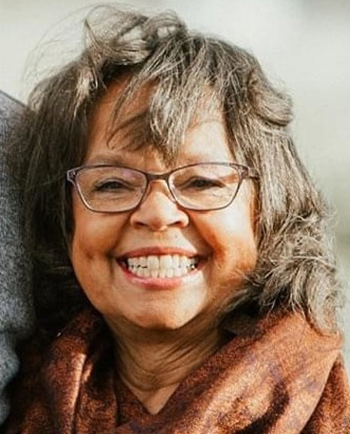
By Pam Wright
Local Journalism Initiative Reporter
Renowned historian and curator of the Buxton National Historic Site and Museum Shannon Prince has retired from her post where she’s been a familiar face for the past 25 years, and she’s gone out with a bang.
Prince, along with husband Brian, are to be named to the Order of Canada for their years of preserving and promoting Black history.
While Shannon has retired from the museum, she’s not going far and will continue to keep her hand in several projects telling the story of Black history in Canada.
Prince, who has received an honorary doctorate for her work from the University of Windsor, is happy to turn the reins over to Michelle Robbins. Robbins previously served as the assistant curator.
The Chatham Voice caught up with Prince to ask her a few questions about her life’s work as well as her plans for retirement.
Q. What is the most important change regarding Black history and culture that you’ve witnessed over the course of your career?
A. There has become more interest and increased awareness. When I first began working at the museum, the interest was there; there were tour groups and drop in visitors, but over the years with various spotlights on Black history books, the Black Lives Matter movement, and documentaries, people want to know more about Black history, or I should say Canadian history.
Q. What ancestral connections do you have to slavery in pre-Civil war America? When did your family come to Chatham-Kent?
A. I’m a sixth generation descendant and my family came from White County Tennessee and arrived in Buxton in 1856.
Q. Do you feel that Black African Canadians are experiencing a new level of inclusivity in society? Do you think we still have a long way to go?
A. I think this is an ongoing progress and there’s still a long way to go. I believe some organizations, institutions, companies, etc. are embracing it and doing training with staff about racism, equity and inclusivity, but others I feel are just checking the boxes as making change would be difficult. So, it’s a work in progress and I applaud those that are taking initiatives.
Q. What are your plans for retirement?
A. Taking each day at a time! I’ll still be involved and have several projects for next year. We have 11 grandkids, so no doubt they too will play an important factor. Plus, we are farming.
Q. How can the ordinary person who does not have any direct connection to Black culture help bring about change?
A. Education! The more we invest in learning about all of our cultures, there should be more understanding of who everyone is. We all have a shared rich history and we should learn to be more accepting. I would encourage people to visit a museum, or attend a cultural event from a different culture to get a glimpse of others.
Q. Name three of the most important books or documents that you’ve come across in your life regarding Black history.
A. Now this is a loaded question! The museum is fortunate to have some invaluable primary resource documents such as Rev. King’s diary; A.D. Shadd’s journal (the father of Mary Ann Shadd Cary) along with his brothers and Mary Ann Shadd’s printing press. But the museum also has collector rolls and census records that date back to 1851 which provide a glimpse of what was happening in the settlement and area during different times.
Q. What is one story that you will never forget?
A. Too many! But I think when people pick up the original shackles at the museum, and they evoke so many emotions in people – usually they cry – when hearing they were actually worn by someone who was enslaved.
Q. You and your husband Bryan have travelled around the world carrying the story of Black history. Will you continue to do that in the future?
A. We are getting to an age where we are slowing down.





